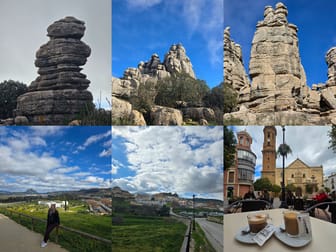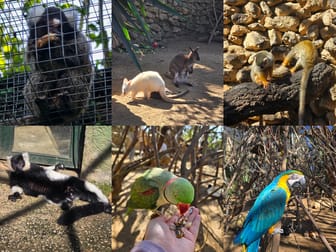2-day Seville Travel Guide: UNESCO, food and more!
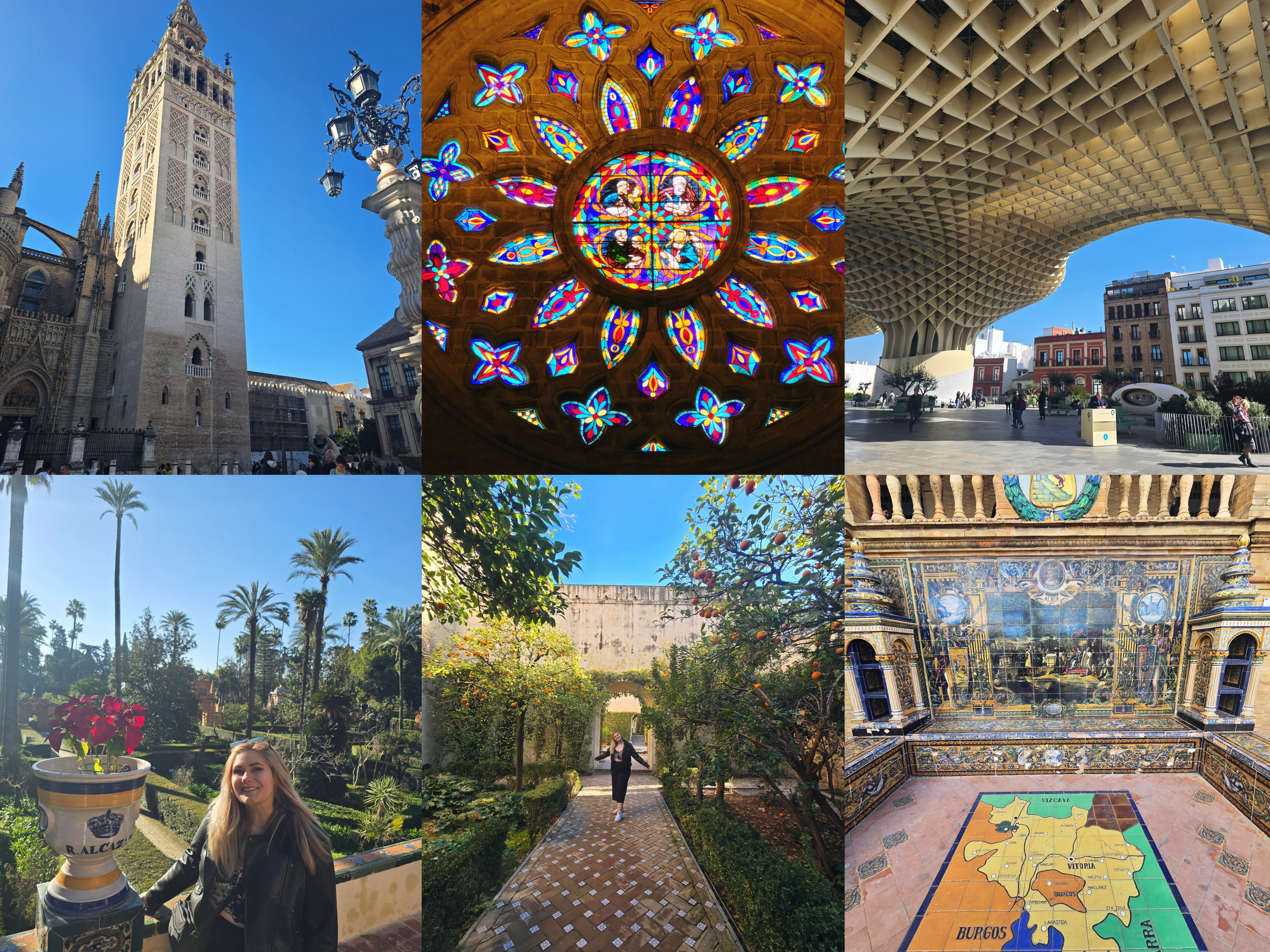
About Seville: A City of History and Culture
Seville has a long and fascinating history, shaped by Romans, Moors, and Catholic kings. Once a major port for Spanish exploration, it played a crucial role in Spain’s colonial empire, with Christopher Columbus setting sail from here on his voyages to the New World.
The city boasts three UNESCO World Heritage Sites:
➡️Seville Cathedral & La Giralda – The world’s largest Gothic cathedral, home to Columbus’ tomb and the iconic La Giralda tower, a former minaret.
➡️Real Alcázar de Sevilla – A stunning Moorish palace, still used by the Spanish royal family.
➡️Archivo de Indias – A historic archive containing documents from Spain’s colonial empire, including letters from Columbus and Magellan.
Beyond its famous sites, Seville is known for its Semana Santa (Holy Week) processions, the Feria de Abril festival, and its deep-rooted flamenco culture.
How to Get to Seville?
Seville is well-connected by air, train, and road, making it easy to reach from Spain and beyond.
✈️ By Plane: Seville Airport (SVQ) has direct flights from major European cities. A bus (EA line) connects the airport to the city centre in about 35 minutes.
🚆 By Train: Seville is a major stop on Spain’s high-speed AVE train network, with direct trains from Madrid (2.5 hours), Barcelona (5.5 hours), and Málaga (2 hours). The main station is Santa Justa.
🚌 By Bus: Long-distance buses connect Seville to other Spanish cities. The main stations are Plaza de Armas and Prado de San Sebastián.
🚗 By Car: The city is well connected by highways, but driving in Seville’s old town is difficult due to narrow streets and limited parking. We book an apartment with parking spot so keep that in mind when booking.
Public Transport in Seville
Seville has an efficient public transport system, but most of the city’s main sights are within walking distance.
🚇 Metro – Seville has only one metro line, but it connects key areas (1.60 euros, buy before going, runs every 10 minutes).
🚋 Trams (MetroCentro) – A small tram line runs from San Bernardo to Plaza Nueva, useful for reaching the Cathedral.
🚌 Buses – The TUSSAM bus network covers the whole city. A single ticket costs 1.40 € (buy on the bus)
🚲 Cycling – Seville is one of Spain’s most bike-friendly cities, with Sevici, a popular bike-sharing service, but with all the crowd, I wouldn't recommend it.
Final Tips for Visiting Seville
🌸Best time to visit: Spring (March-May) for pleasant weather and festivals. Summer can be extremely hot!
❗️❗️❗️Buy tickets in advance for Alcázar, Cathedral, and La Giralda to avoid long queues. We bought ours a month and a half in advance and went in mid-February. If you are going during peak season, buy a couple of months in advance!
🚶♂️🚶♀️Wear comfortable shoes, as Seville is best explored on foot!
Top Things to See in Seville
1. Seville Cathedral & La Giralda
The largest Gothic cathedral in the world, with stunning stained glass windows, intricate altars, and Columbus’ tomb. Climb La Giralda for amazing city views.
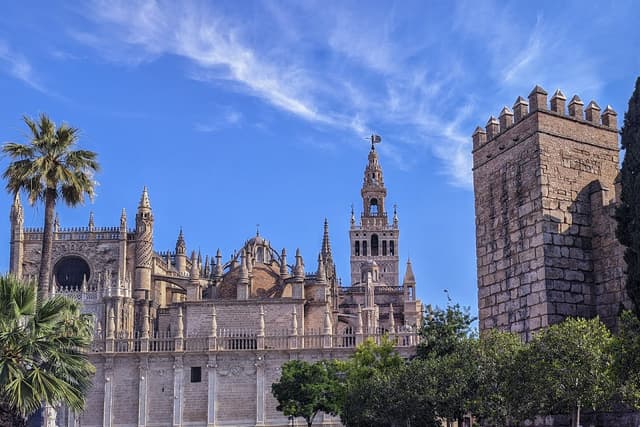
Views from La Giralda (the church bell tower) [it takes some climbing but it is totally worth it!!]:
Archutecture wonder:
Picture above was taken at this bar:
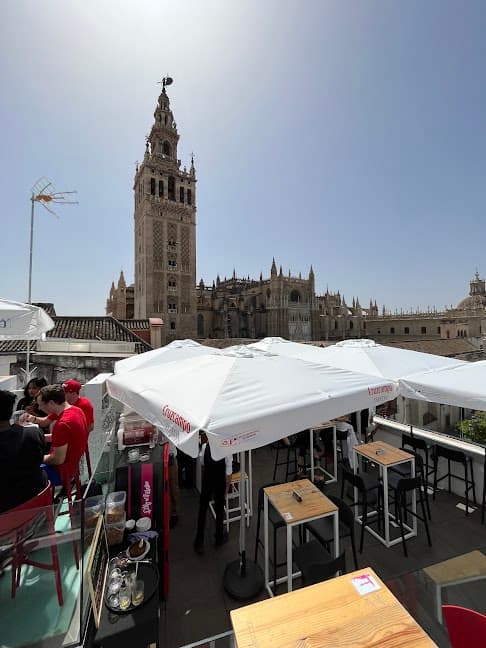
2. Real Alcázar de Sevilla
A breathtaking Moorish palace, with intricate tilework, stunning courtyards, and lush gardens. A must-visit UNESCO site.
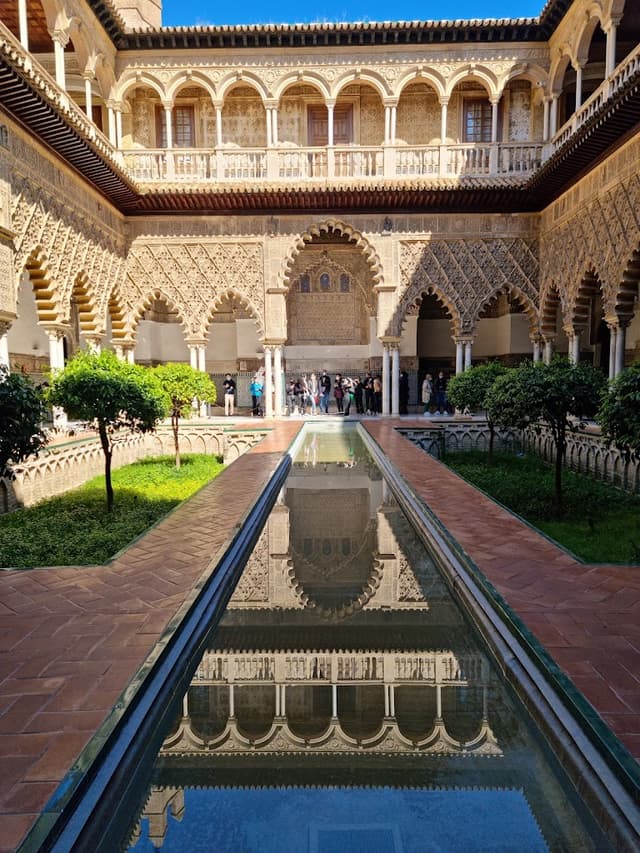
❗️Honest opinion: ❗️
The Alcázar was so beautiful! If you go alone, there are a few information boards that explain what the place is, but in the end, we regretted not taking a guided tour. So, here is the link—I saw that they offer various guided tours with tickets included. Even if you haven’t bought a ticket in advance, there may still be spots available on Get Your Guide.
Download the app using the link below, search for Seville, and book the tour you like. While booking, use ✨️petrahus10 ✨️as your discount code!
3. Plaza de España
Built for the Ibero-American Exposition of 1929, this grand semicircular square features ceramic-tiled alcoves, a canal, and impressive bridges.
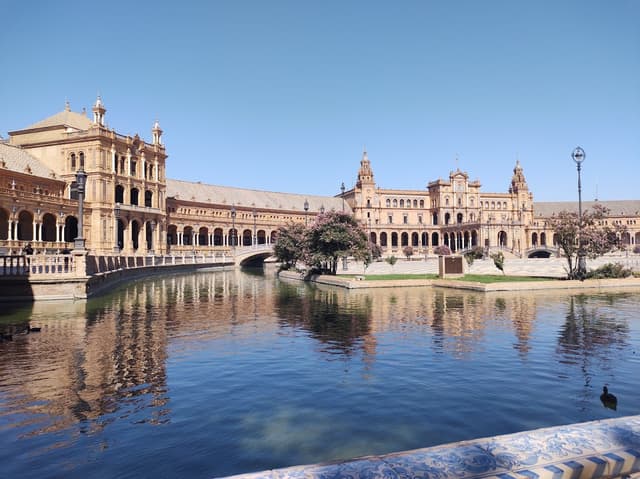
4. Metropol Parasol (Las Setas de Sevilla)
A modern wooden structure with a panoramic walkway, offering great views of the city. Below, the Antiquarium showcases Roman ruins.
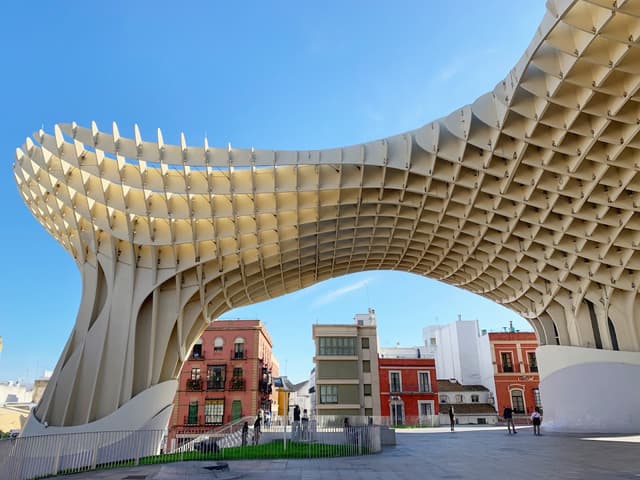
5. Archivo de Indias
A historic archive housing documents from Spain’s colonial past, including letters from Columbus and other explorers.
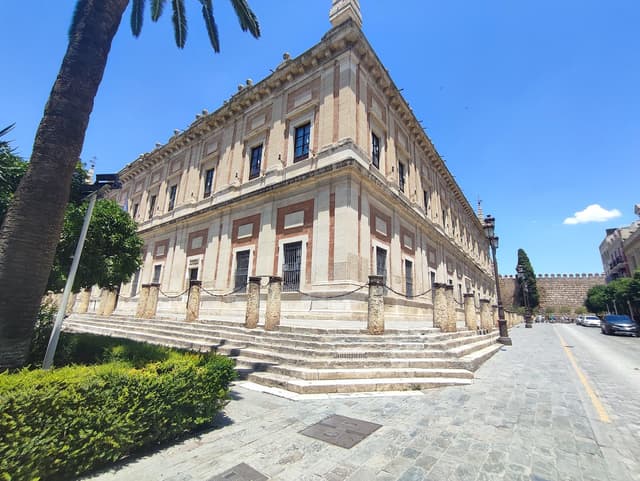
6. Alameda de Hércules
A lively square filled with cafés, tapas bars, and cultural spaces, great for nightlife and a local atmosphere.
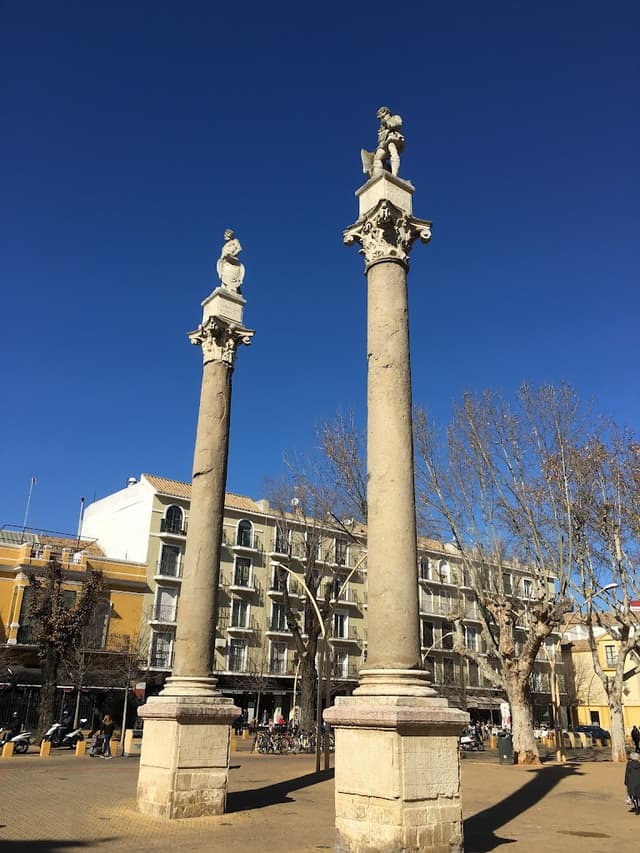
7. Various casa's
In Seville, there are several casas from noble families that once lived there, but the entrance fees vary for each one. We didn’t visit any of them because we felt that €12 for a visit was a bit too much, and after seeing the Alcázar, nothing could compare. So, I’ll leave you with a list, and you can decide for yourself:
🏛️ Hospital de los Venerables (€12)
A 17th-century Baroque building originally built as a home for retired priests. It features beautiful courtyards, frescoed ceilings, and an impressive church with works by Murillo. Today, it houses the Velázquez Center, dedicated to the famous Spanish painter.
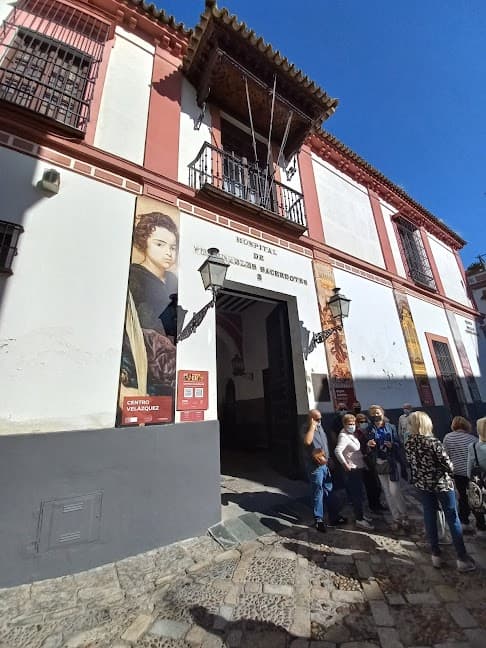
🏰 Casa de Pilatos (€12)
A stunning Andalusian palace blending Moorish, Gothic, and Renaissance architecture. It features ornate tilework, peaceful courtyards, and classical statues. A visit offers a glimpse into the luxurious lifestyle of Seville’s noble families.
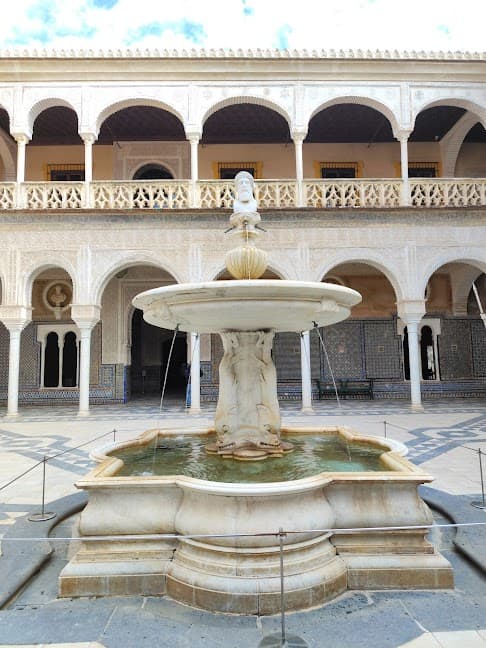
🌿 Las Dueñas Palace (€9)
A 15th-century palace known for its elegant gardens, vibrant tilework, and Renaissance architecture. It was once home to the Duchess of Alba, one of Spain’s most famous aristocrats. The palace is filled with art, antiques, and historical furniture.
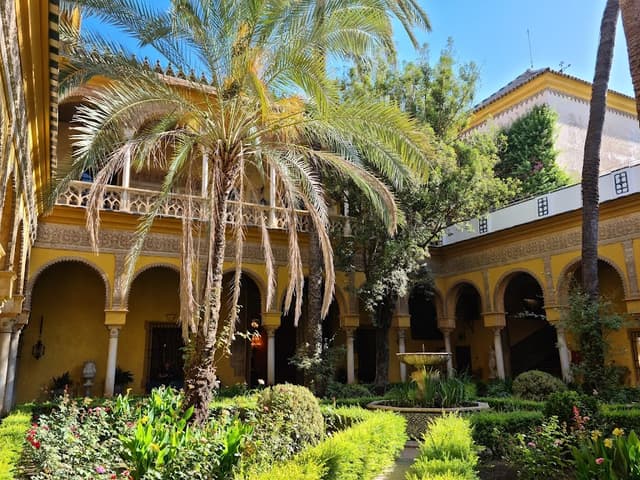
⛪ Hospital de la Caridad (€8)
A charity hospital from the 17th century, founded by the fascinating Miguel de Mañara, who later inspired the legend of Don Juan. The Baroque church inside is adorned with paintings by Murillo and Valdés Leal, reflecting themes of charity and mortality.
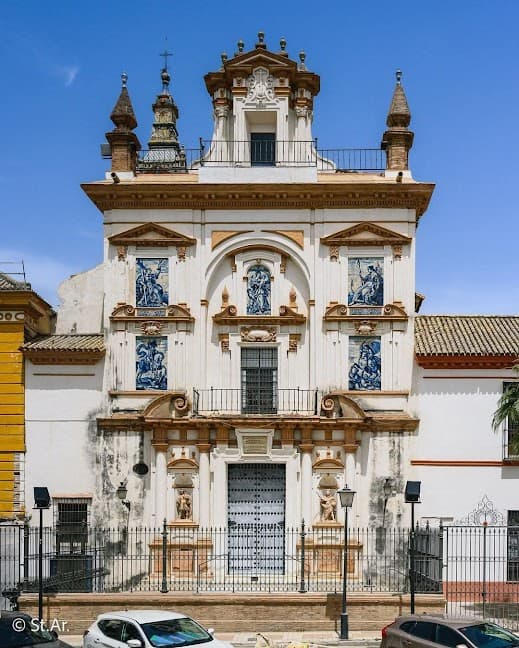
8. Iglesia de El Salvador
A Baroque church, included in the Cathedral ticket, built on the site of a former mosque. Its gilded altarpieces and frescoed ceilings are spectacular.
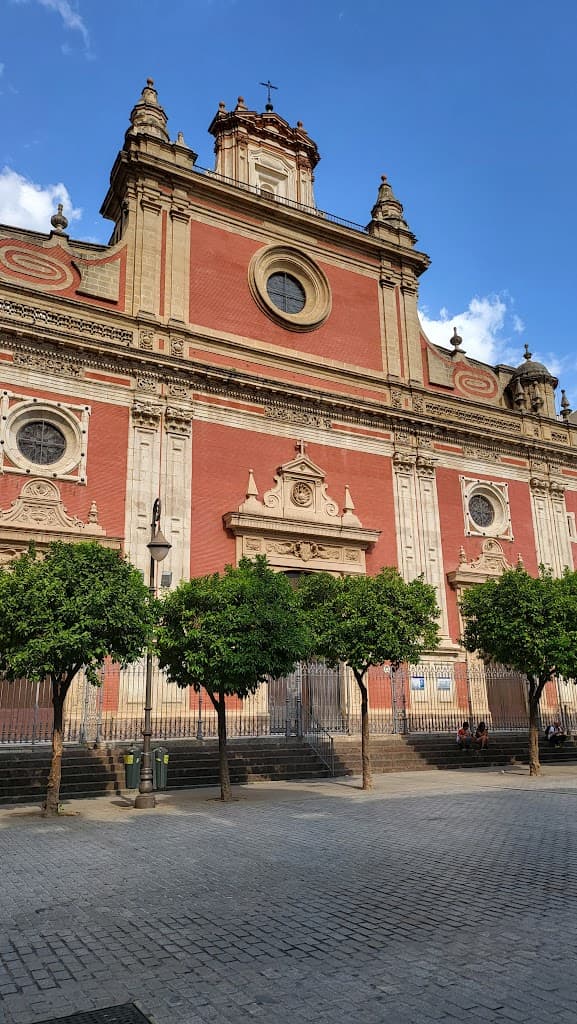
10. Calle Feria & El Jueves Market
Seville’s oldest street market, held every Thursday, selling antiques, art, and unique finds. Nearby, the Mercado de Feria is great for trying local food.
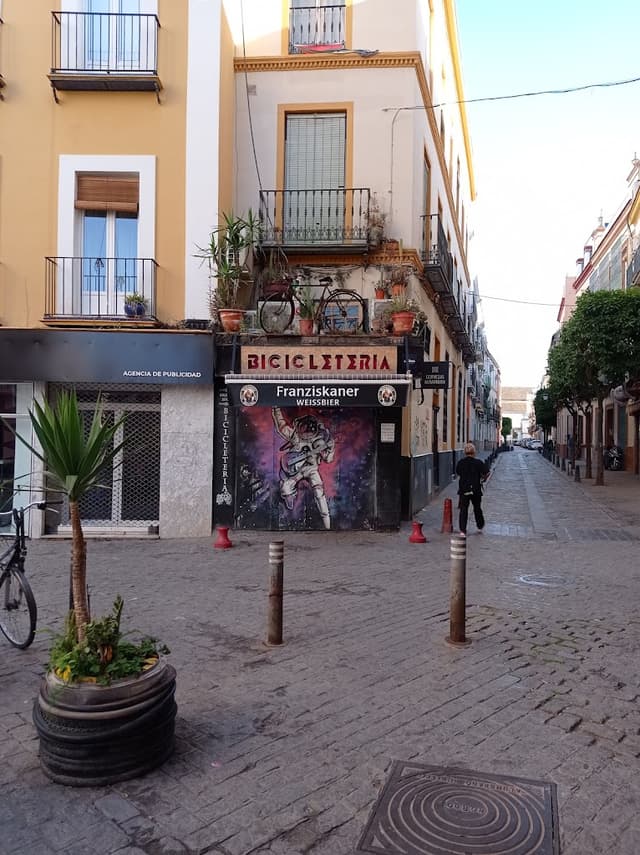
11. Torre del Oro: Seville’s Golden Tower
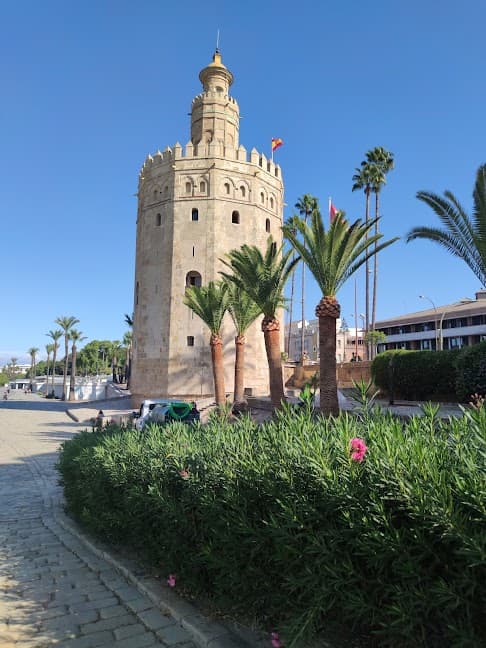
12. Parlamento de Andalucía
The Parlamento de Andalucía is housed in the former Hospital de las Cinco Llagas, a 16th-century Renaissance building. Once one of Europe’s largest hospitals, it became the seat of Andalusia’s regional government in 1992. Its grand courtyards, arched galleries, and historic chapel reflect Seville’s architectural heritage. While not always open to the public, visitors can admire its imposing façade near the Macarena district.
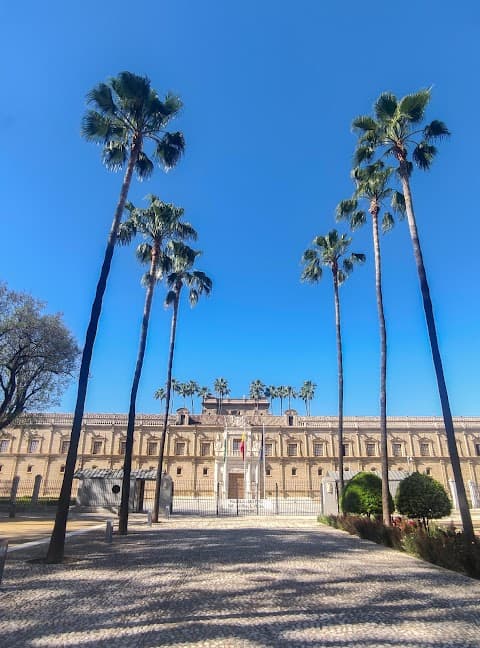
13. Basílica de la Macarena & Arco de la Macarena
The Basílica de la Macarena is one of Seville’s most important religious sites, home to the revered statue of La Virgen de la Macarena, highly venerated during Semana Santa. Built in the 20th century, the basilica’s bright yellow façade and ornate Baroque interior make it a must-visit. Next to it stands the Arco de la Macarena, one of the few remaining gates of Seville’s old city walls, dating back to the 12th century.
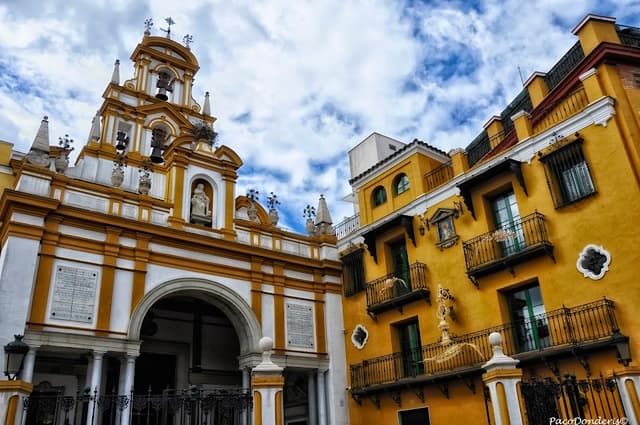
14. San Luis Street: Seville’s Street of Churches
San Luis Street is a historic road lined with stunning Baroque churches:
⛪ Iglesia de San Luis de los Franceses – A Baroque masterpiece with frescoed domes, golden altars, and intricate carvings.
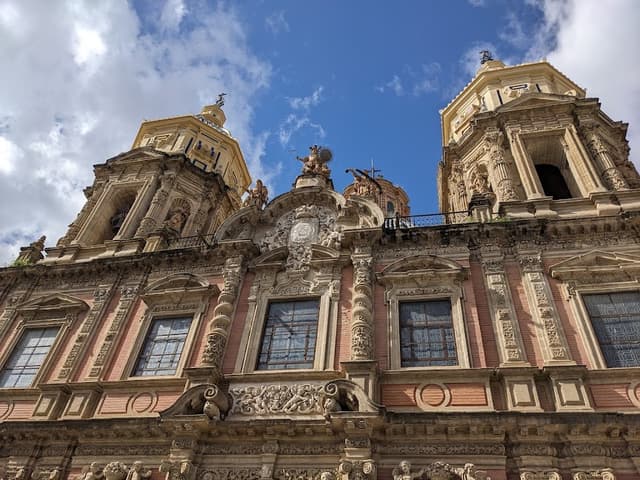
⛪ Iglesia de Santa Marina – A Mudejar-Gothic church, one of Seville’s oldest.
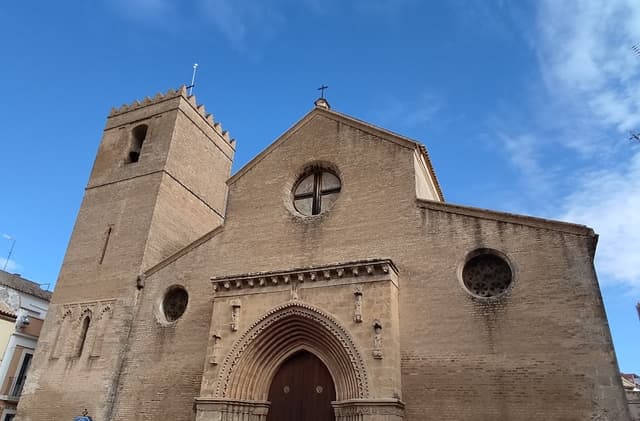
⛪ Iglesia de San Marcos – Featuring a Moorish-style tower, blending Islamic and Christian architecture.
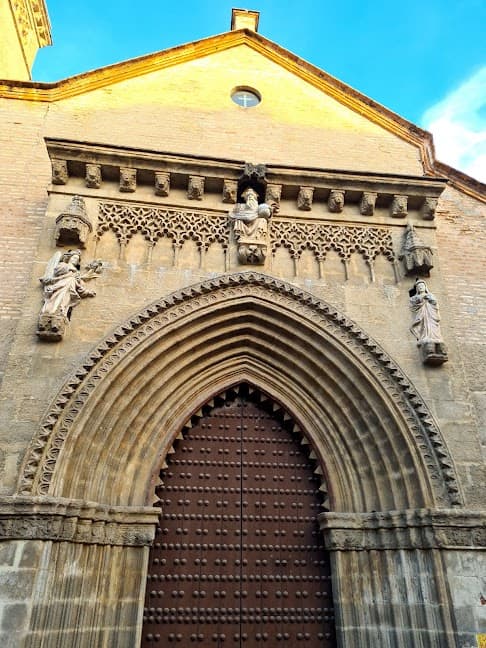
⛪ Iglesia de San Gil – A small but historic Gothic-Mudejar church, near the Macarena district.
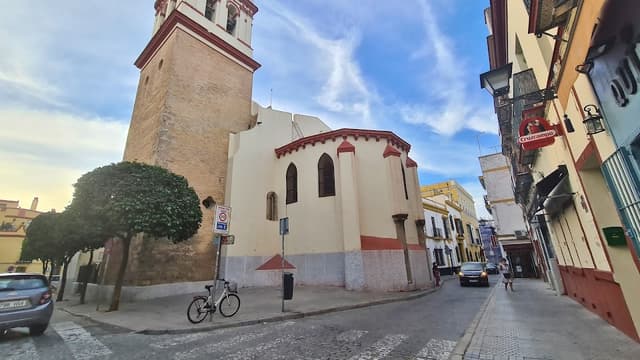
15. Calle Adriano
Located near Plaza de Toros de la Maestranza, Calle Adriano is a lively street known for its traditional tapas bars, historic charm, and buzzing nightlife. During the day, it’s perfect for enjoying authentic Andalusian cuisine, with top spots like Bodega Díaz Salazar and Bar Baratillo. At night, the street comes alive with bars, flamenco venues, and late-night eateries, making it a great place to experience Seville’s vibrant nightlife.
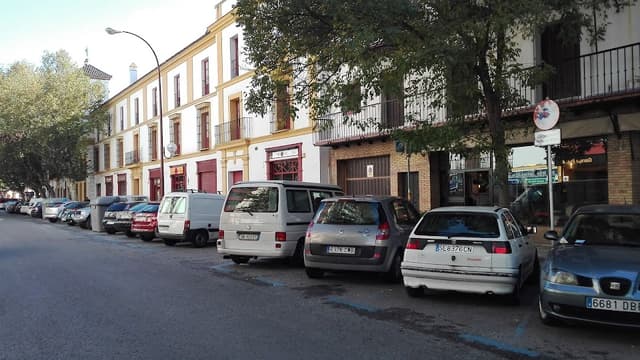
16. Avenida de Cristóbal Colón
Running along the Guadalquivir River, Avenida de Cristóbal Colón is a beautiful avenue with stunning waterfront views. It connects landmarks like Torre del Oro, Plaza de Toros, and Triana Bridge, making it perfect for a scenic evening stroll. As night falls, the area transforms into a nightlife hotspot, with trendy bars, rooftop terraces, and lively clubs along the river. This is one of the best areas to enjoy cocktails, live music, and Seville’s party scene.
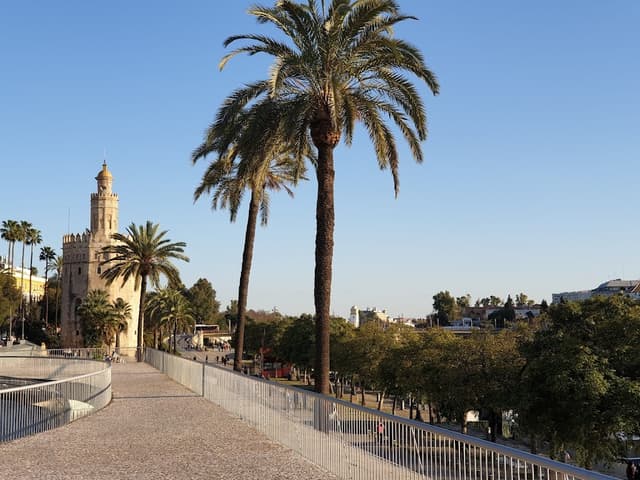
17. Estadio Ramón Sánchez-Pizjuán: Home of Sevilla FC
The Estadio Ramón Sánchez-Pizjuán is Sevilla FC’s iconic stadium, known for its electric atmosphere. Opened in 1958, it has hosted major matches, including the 1982 FIFA World Cup. Fans can take a stadium tour to see the trophy room, locker rooms, and pitch.
🎟️ Ticket prices:
Stadium tour: ~€12
Match tickets: From €30-40, depending on the game.
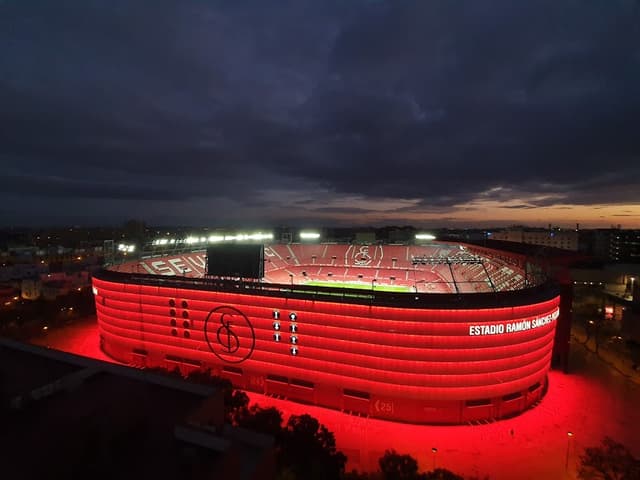
Traditional Food in Seville
Seville is a food lover’s paradise, famous for its tapas culture. Some must-try dishes include:
🍳 Tortilla Española – A thick Spanish omelette made with eggs, potatoes, and onions.
🍤 Gambas al Ajillo – Prawns cooked in garlic and olive oil.
🥓 Jamón Ibérico – Cured Iberian ham, often served with bread and cheese.
🐟 Pescaito Frito – Crispy fried fish, a popular Andalusian dish.
🥘 Espinacas con Garbanzos – A spinach and chickpea stew, a favourite vegetarian dish.
🍞 Montaditos – Small sandwiches filled with meats, cheeses, or seafood.
🍷 Orange Wine (Vino de Naranja) – A local sweet wine, perfect for an evening drink.
For dessert, try Torrijas (Spanish-style French toast) or Polvorones (almond cookies).
Want more? Check out:
The home for unique & authentic travel
